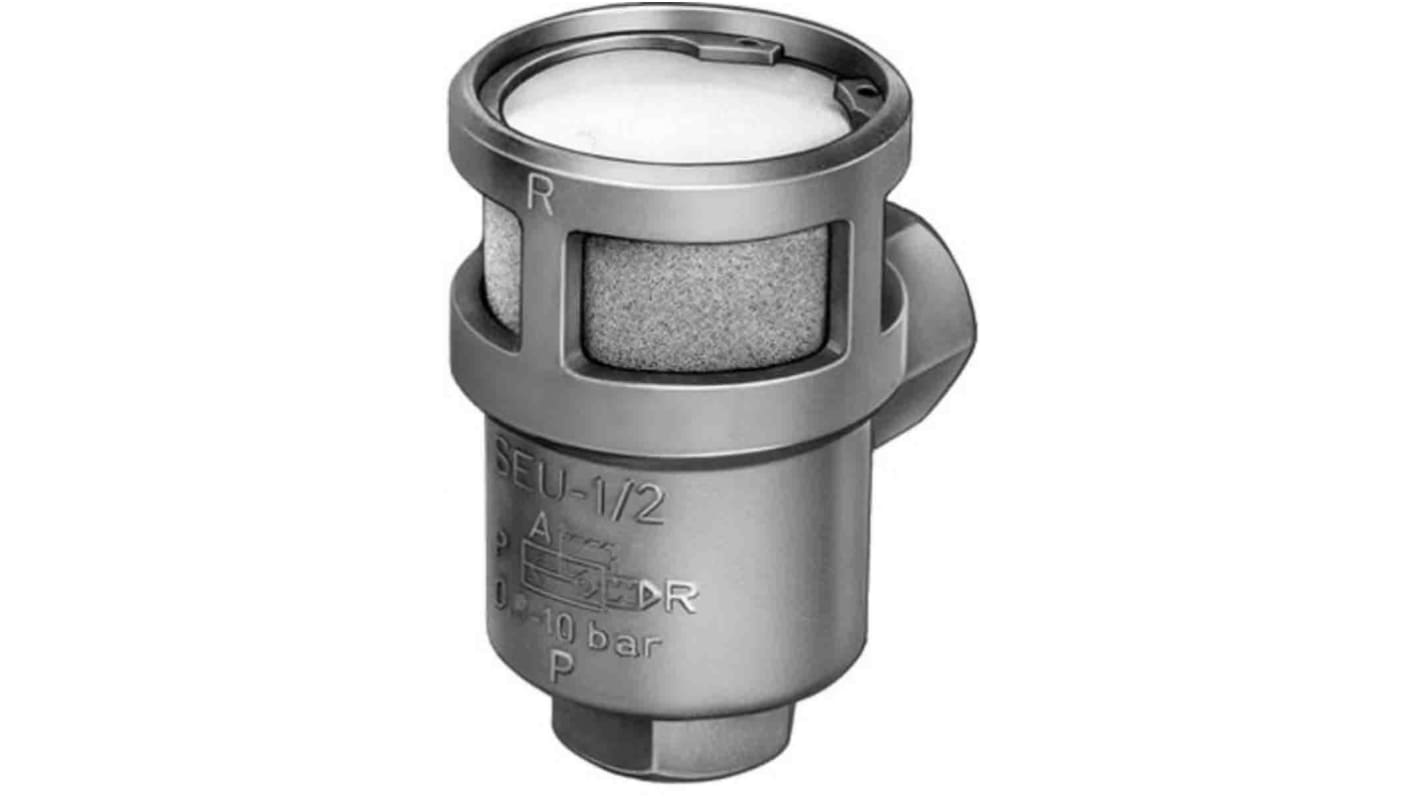Festo Quick Exhaust Valve, G 1/2 x 10 bar, Threaded, 15mm
- RS Stock No.:
- 202-3755
- Mfr. Part No.:
- SEU-1/2
- Brand:
- Festo

Subtotal (1 unit)*
£100.63
(exc. VAT)
£120.76
(inc. VAT)
FREE delivery for orders over £50.00
In Stock
- 6 unit(s) ready to ship
- Plus 20 unit(s) ready to ship from another location
Need more? Click ‘Check delivery dates’ to find extra stock and lead times.
Units | Per unit |
|---|---|
| 1 + | £100.63 |
*price indicative
- RS Stock No.:
- 202-3755
- Mfr. Part No.:
- SEU-1/2
- Brand:
- Festo
Specifications
Technical Reference
Legislation and Compliance
Product Details
Find similar products by selecting one or more attributes.
Select all | Attribute | Value |
|---|---|---|
| Brand | Festo | |
| Threaded Connections | G 1/2 | |
| Tube Connections | 15mm | |
| Connection Type | Threaded | |
| Maximum Operating Pressure | 10 bar | |
| Manufacturer Series | A | |
| Built-In Silencer | Yes | |
| Threaded Connection - Gender | Female, Male | |
| Threaded Connection Size | 1/2 in | |
| Minimum Operating Pressure | 0.3bar | |
| Threaded Connection Type | G | |
| Body Material | Die Cast Aluminium | |
| Standards Met | ISO8573-1:2010 | |
| Select all | ||
|---|---|---|
Brand Festo | ||
Threaded Connections G 1/2 | ||
Tube Connections 15mm | ||
Connection Type Threaded | ||
Maximum Operating Pressure 10 bar | ||
Manufacturer Series A | ||
Built-In Silencer Yes | ||
Threaded Connection - Gender Female, Male | ||
Threaded Connection Size 1/2 in | ||
Minimum Operating Pressure 0.3bar | ||
Threaded Connection Type G | ||
Body Material Die Cast Aluminium | ||
Standards Met ISO8573-1:2010 | ||
- COO (Country of Origin):
- DE
Festo Pneumatic Quick Exhaust Valve, 0.3 to 10 Bar, G1/2 Port - SEU-1/2
Increase pneumatic cycle speeds with this quick exhaust valve from Festo. It directs air released from a cylinder into the atmosphere, preventing it from flowing back through the directional valve. This conserves energy and lets you use a smaller valve in your pneumatic application. Aluminium die-cast housing makes this component durable and stable, even when it's operating at high pressures. The unit also includes a silencer, which reduces exhaust noise to levels that are safe for operators.
• Wide pressure operating range of 0.3 to 10 bar
• Nitrile rubber seals are able to withstand high pressures
• Broad operating temperature range of -20°C to +75°C for use in harsh conditions
• Can be assembled in any position for improved versatility in pneumatic circuit design
• Nitrile rubber seals are able to withstand high pressures
• Broad operating temperature range of -20°C to +75°C for use in harsh conditions
• Can be assembled in any position for improved versatility in pneumatic circuit design
Applications
• Industrial automation
• Robotics
• Printing and textile industries
• Robotics
• Printing and textile industries
What factors affect the speed of a cylinder?
The speed of a cylinder is determined by how easily incoming pressure can overcome the resistance of the load. It's also affected by the amount of energy needed to get the air on the opposite end of the piston out. An exhaust port helps to reduce the resistance of outgoing air.
